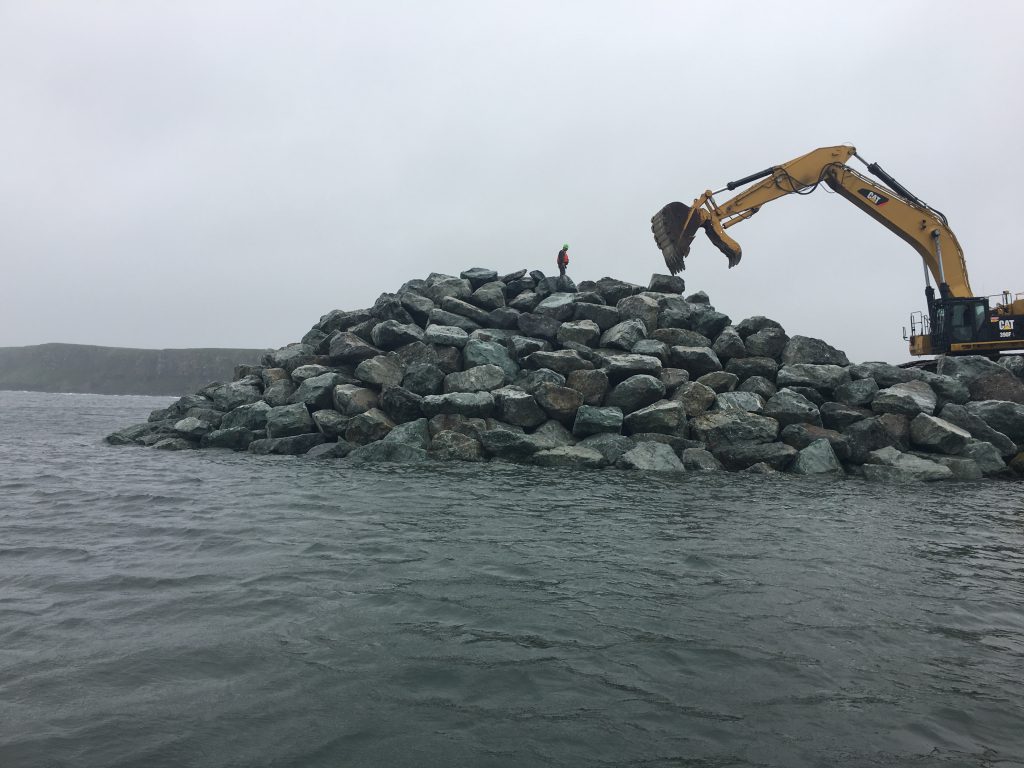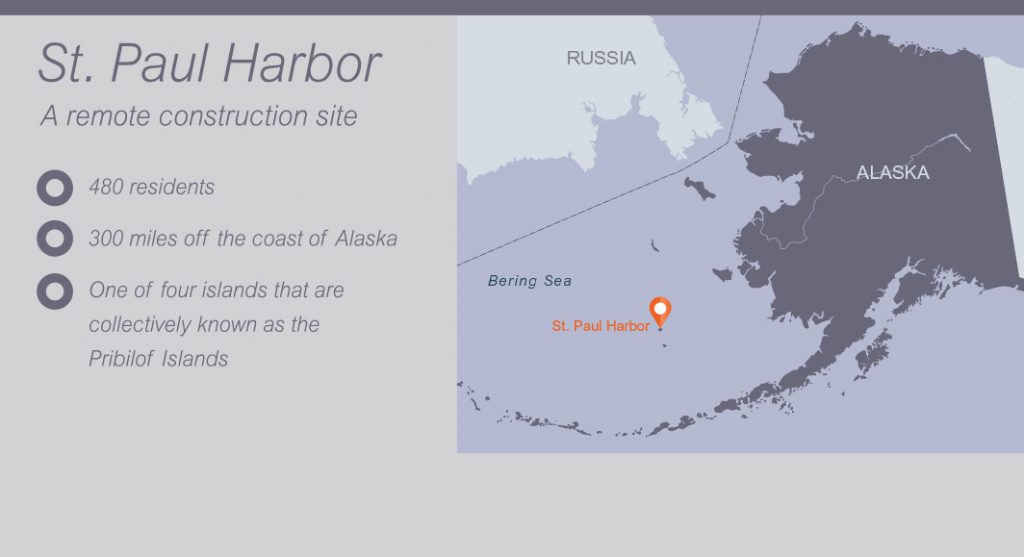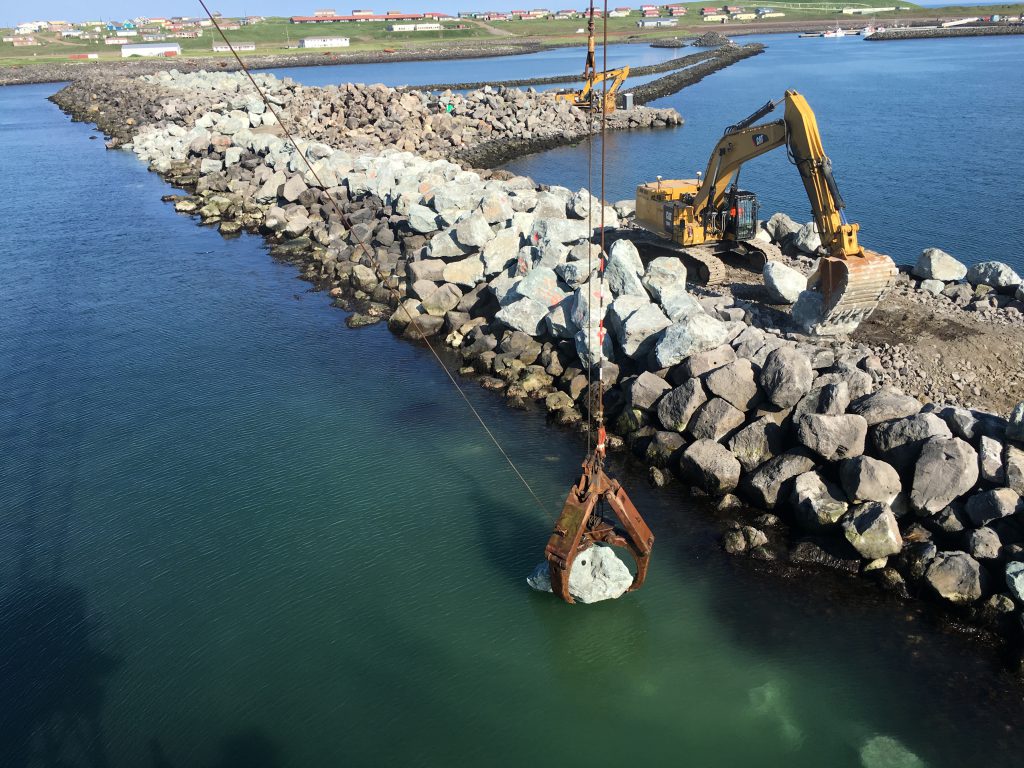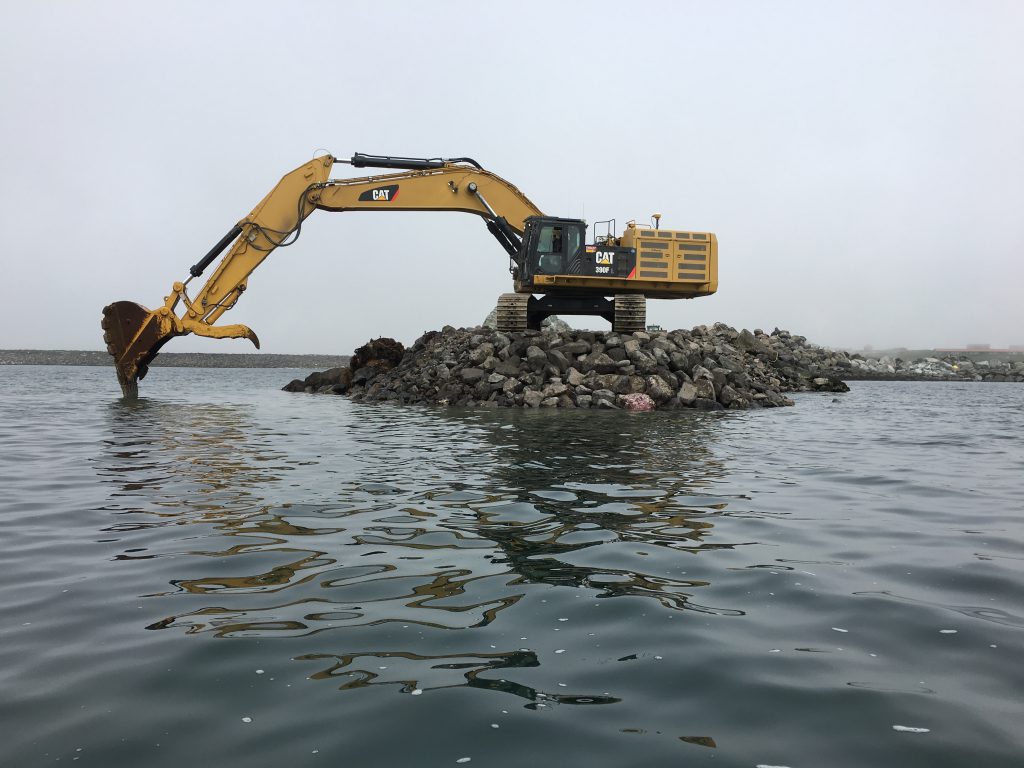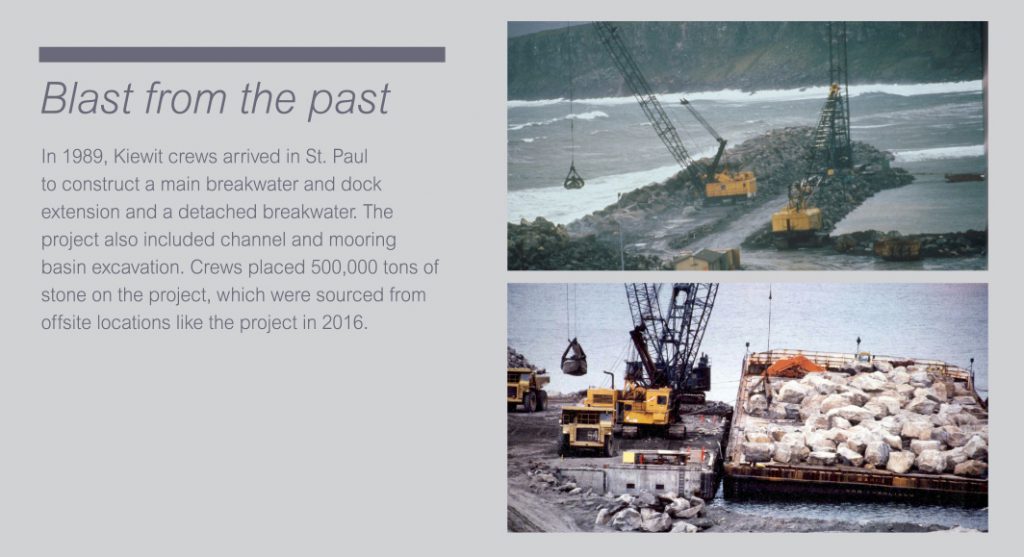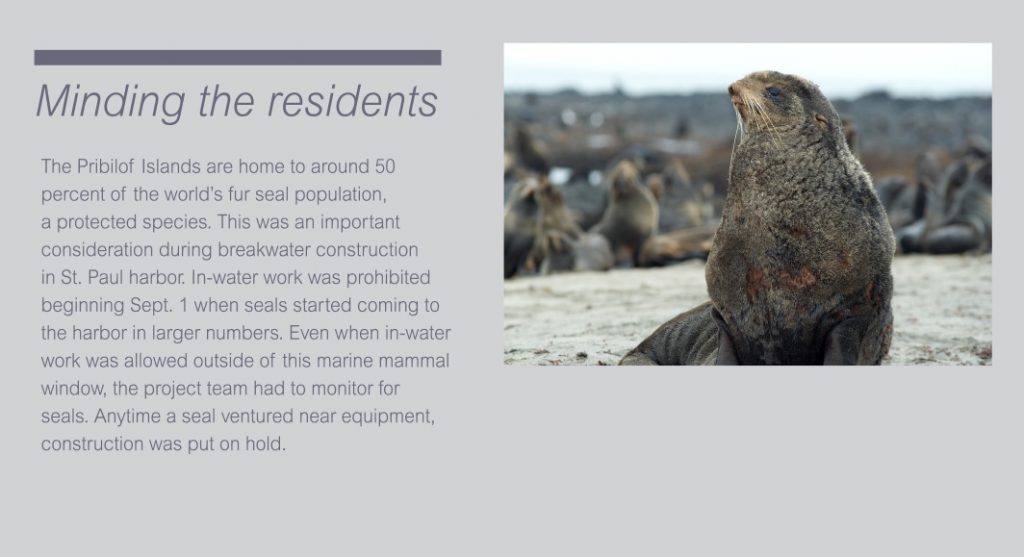When Clint Lane arrived in St. Paul, Alaska, with about 30 Kiewit staff and craft to repair breakwaters in the local harbor, they knew that the team had to match some
high standards.
“It seemed like everywhere we went we heard about what past Kiewit crews did. The locals. The city manager. Everyone had something to tell us,” Lane said.
That reputation had endured for nearly 30 years since Kiewit’s first project building the original breakwaters for the U.S. Army Corps of Engineers (USACE), followed by a few additional jobs in the ‘90s. And it was strong enough that even decades later, some individuals were remembered by name.
“I heard the name Ken Brookhart more times than I can count,” Lane said, referring to a former Kiewit employee. “People remembered him from the first time we were up here in the ‘80s.”
As was the case with prior projects, Kiewit had a lot on its plate as it started construction in 2016. Perhaps no task was more important to the team than living up to the reputation that preceded them.
Many of Kiewit’s projects are built in remote locations, but it’s hard to imagine one that fits the description better than St. Paul. Located in the Bering Sea nearly 300 miles from the mainland of Alaska, it’s one of four islands that as a group are known as the Pribilof Islands.
For those who’ve never experienced it, the Bering Sea is perhaps most known for the omnipresent role it plays in the Discovery Channel’s “Deadliest Catch.” An episode in the show’s seventh season titled, “The Island,” highlighted just how difficult it is to sail in and out of St. Paul’s harbor.
The same conditions that challenge crab fisherman challenged Kiewit’s construction crews. To avoid the worst issues, work was planned during a four-month window from May through August. Kiewit had one shot to get equipment and material deliveries right.
“If you don’t bring the right stuff, or if it breaks, you won’t get done on time. It’s not going to happen,” said Lane. “A barge takes weeks to arrive and every additional day adds time and cost. From excavators to office supplies, you have to have it all accounted for, and if you’re wrong you live with those consequences.”
“Once you’re on the site, it’s not about what you need, it’s what you do with what you have,” added Kiewit Superintendent Ryan Brunner.
In addition to completing 83,000 cubic yards of dredging, more than 32,000 cubic yards of armor stone and scour rock were placed on the project. Some was sourced locally, but most was barged in from Washington and Kodiak, Alaska.
“We were doing calculations up to 10 times a day to make sure we knew the exact quantities we’d need,” Lane said.
Ultimately they were spot on. The project finished on time with one armor stone to spare.
Lane and Brunner each attributed the team’s success in large part to adaptability.
“In addition to the Kiewit staff with experience on these types of remote projects, we have a core group of craft that works with us in Alaska,” Brunner said. “They know how to adapt to these conditions and are important members of our team. We got them involved in our scheduling and planning before the project even started, which helped us stay on target.”
While the scope on projects like St. Paul may be smaller than a transportation megaproject in Toronto or a power plant in California, they are no less significant to the communities that rely on them.
Understanding what the project means to locals is what motivates Kiewit employees like Lane to live up to the standard that was set before them, and to build more goodwill of their own.
“This harbor is essential to the economy and life in St. Paul,” Lane said. “If a storm came in and washed out the breakwater, it would be catastrophic. The community trusted us to come in and do things the right way in large part because of the way the Kiewit teams before us performed. We made a commitment to conduct ourselves and our work with respect for everyone in St. Paul. Hopefully down the line when another project comes up, they’ll remember our team as fondly as Ken and all of the other crews before us.”
